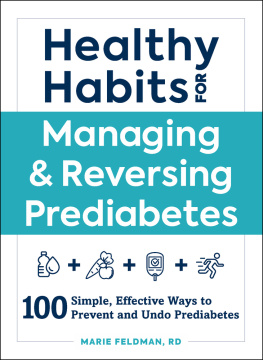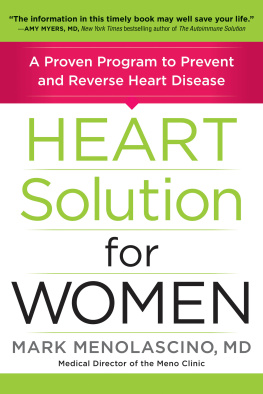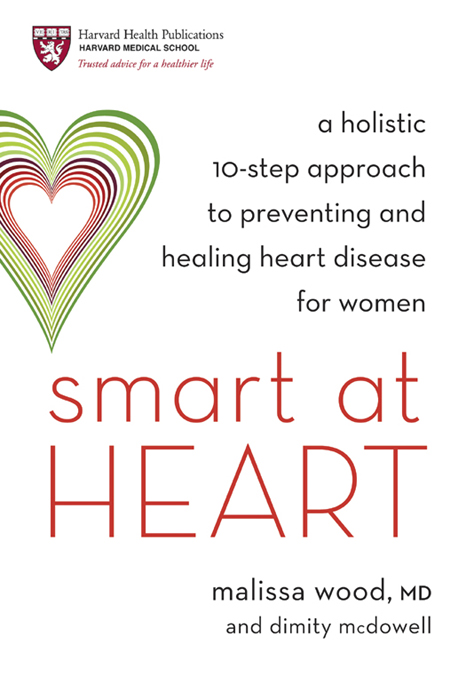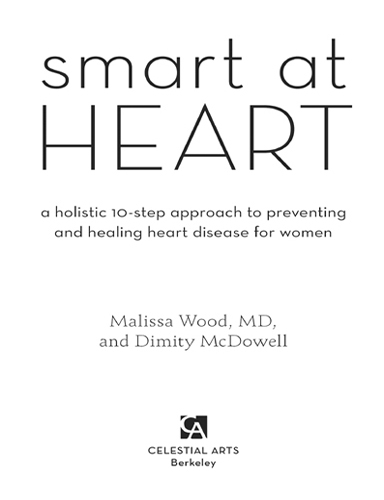The information contained in this book is based on the experience and research of the authors. It is not intended as a substitute for consulting with your physician or other health-care provider. Any attempt to diagnose and treat an illness should be done under the direction of a health-care professional. The publisher and authors are not responsible for any adverse effects or consequences resulting from the use of any of the suggestions, preparations, or procedures discussed in this book.
Authors Note: all patient names have been changed to protect the privacy of those individuals.
Copyright 2011 by Harvard University
All rights reserved.
Published in the United States by Celestial Arts, an imprint of the Crown Publishing Group, a division of Random House, Inc., New York.
www.crownpublishing.com
www.tenspeed.com
Celestial Arts and the Celestial Arts colophon are registered trademarks of Random House, Inc.
Illustration on
Library of Congress Cataloging-in-Publication Data
Wood, Malissa.
Smart at heart : a holistic 10-step approach to preventing and healing heart disease for women / Malissa Wood and Dimity McDowell. 1st ed.
p. cm.
Summary: A mind-body program to build a strong, healthy, and happy heart, for women at risk for or diagnosed with heart diseaseProvided by publisher.
1. HeartDiseasesAlternative treatment. 2. Holistic medicine. 3. Women Health and hygiene. 4. HeartDiseases I. McDowell, Dimity. II. Title.
RC684.A48W66 2011
616.106dc23
2011030470
eISBN: 978-1-58761-281-7
Cover design by Betsy Stromberg
v3.1
To the Corrigan-Minehan family, whose generosity and vision
led to the founding of HAPPY Heart. Thank you also to the
participants and staff of HAPPY Heart for your unending
cooperation, assistance, and enthusiasm.
CONTENTS
chapter one
Smart at Heart
chapter two
The Physical Health Bridge
chapter three
The Emotional Health Bridge
chapter four
The Stress Management Bridge
chapter five
The Exercise Bridge
chapter six
The Nutrition Bridge
chapter seven
The Relationship Bridge
chapter eight
The Communication Bridge
chapter nine
The Environment Bridge
chapter ten
The Mindfulness Bridge
chapter eleven
The Modification Bridge
INTRODUCTION
The year 2006 wasnt a great one for me. In June, I lost my nephew in a tragic accident. In October, my mother died of complications from a stroke. In addition, my eleven-year-old son, one of my four children, was diagnosed with autism spectrum disorder. I also made the tough decision to finalize my divorce. My ex-husband and I realized that despite our friendship and mutual commitment to raising our children, we could not bridge the gap in our friendship that had formed over time. All that tough news was on top of the whopper I received in December 2006: I had breast cancer. I almost couldnt believe it; I was a healthy forty-three-year-old woman who had run four marathons and adhered to a primarily vegetarian diet for most of my adult life. And now I had a potentially fatal disease.
While I was recovering from surgery and waiting to find out whether or not the cancer had spread to my lymph nodes, Kelly, a twenty-year survivor of ovarian cancer and a friend of a friend, came to see me. The morning of her visit, she brought me coffee and muffins. More importantly, she brought me hope. She told me that a cancer diagnosis was in fact an opportunity. With a fresh, invigorated perspective, her cancer gave her the chance to appreciate the beauty around her, reassess how she spent her time, and focus on being healthy for the rest of her life. Crisis can equal opportunity, she told me as we sat on the sofa drinking coffee, me cozily wrapped in my favorite pink fluffy robe. She reached out and held my hand as tears rolled down both our cheeks. She told me I would emerge from this experience transformed, stronger, and more resilient than ever.
Fortunately, the cancer hadnt spread, but I realized I needed to pay attention to her important message. Earlier in 2006, I had also laid the foundation for a study I called HAPPY Heart. Medical studies are often known by an acronym, a word that describes what the study does using most or all of the first letters of the studys title; I wanted to come up with something that would reflect healthy habits and healthy, happy hearts. HAPPY stands for Heart Awareness and Primary Prevention in Your neighborhood. As I was washing dishes one night, the expanded title just popped into my head, and so I had the first, and perhaps hardest, step completed: getting started.
In many ways, HAPPY Heart was the natural progression for my somewhat untraditional career path as an academic cardiologist. A little history: because my then-husband had a military payback obligation in San Antonio, my first job as a physician was in Texas, which was far away, both physically and culturally, from Boston, where I had completed my internship, residency, and fellowship. In my practice in Texas, I took care of many young women who already had two strikes against them when it came to cardiovascular disease: a genetic history of heart disease and unhealthy lifestyles. Plus they had very little access to resources to help change their lives. I did my best to provide the clinical care, access to information, and support necessary to get the women motivated. I spent time with each patient, describing the steps they needed to take to improve their health. I referred them to a dietitian and got them started in safe, practical exercise programs. I knew that the women had the power within themselves to make huge life changes; they just needed a gentle push and the right kind of information.
As I saw patient after patient with very similar profiles, I realized that simple education could touch many lives. I joined a small group of committed individuals who collectively worked with the South Texas Chapter of the American Heart Association (AHA), and we laid the groundwork for an annual educational luncheon on the topic of heart disease in women; the luncheon was open to the public, and many of my patients attended. This was in 1996, way before Diet Coke cans started carrying the swishy Go Red logo and heart disease, the number one killer of women, got any play in the media. Heart disease just lurked as a silent threat, and I worked tirelessly to bring the disease the focus it deserved. I went out into the Texas community to churches, womens groups, and public forums to educate and empower women with ideaseverything from hosting healthy cooking parties to setting up neighborhood walking groupsto foster a healthier lifestyle.
Our family, including three kids under the age of five, then headed to Halifax, Nova Scotia, in 1998, where my husband had a two-year fellowship. Again, I found extreme cardiac cases; in Nova Scotia, like the rest of Canada, 31 percent of all deaths are due to heart disease, and every seven minutes somebody dies from heart disease or a stroke, according to the Heart and Stroke Foundation of Nova Scotia. The women I saw were referred to me by their primary care doctors and had basically given up on their health. They felt that their family history of heart disease was a death sentence and they couldnt do anything about it. So they made unhealthy choices like smoking, consuming foods high in saturated fats, and not making an effort to exercise. Depression was also prevalent among these patients, and I knew firsthand that getting these people motivated to exercise was about as close to a magic bullet as I would ever have. I organized a three-mile Mother-Daughter Walk for Heart Disease that raised awareness about the disease in Nova Scotia. As I stood on the podium with Caitlin, my then three-year-old daughter, and addressed the crowd before the walk, I realized that working to help women improve their lives and their health was going to be an important part of my life, wherever I happened to be living and working.







